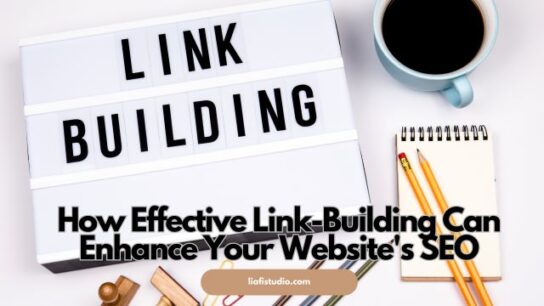Table of Contents:
- Key Takeaways
- Understanding Live Edge Furniture
- The Craftsmanship Behind Live Edge Pieces
- Designing with Live Edge: A Style Guide
- The Sustainability of Live Edge Furniture
- The Therapeutic Effects of Wooden Furniture
- Incorporating Live Edge Furniture in Various Rooms
- Custom Live Edge Creations
- Caring for Your Live Edge Furniture
- The Future of Live Edge in the Furniture Industry
- Purchasing and Valuating Live Edge Furniture
Key Takeaways:
- Live edge furniture showcases the untouched beauty and artistic character of wood.
- Engagement with sustainable and ethical wood sourcing is integral to live edge furniture making.
- Maintaining a conscious and deliberate approach to live edge furniture placement and care enriches both personal spaces and the longevity of the pieces.
- Custom live edge creations offer a personal connection between the artisan’s craft and the client’s space.
Understanding Live Edge Furniture
Live edge furniture represents a design philosophy that champions the unadulterated beauty of wood, drawing attention to its natural, raw edges and idiosyncratic shapes. Each live edge piece invites the outdoors in, blurring the lines between nature and the built environment. Notably, live edge furniture, such as live edge custom tables, often becomes the centerpiece in a room, setting the tone for a harmonious and organic interior aesthetic.
The origin of live edge furniture design harks back to the pioneering work of mid-century woodworkers, who sought to reject the uniformity of mass-produced furniture by highlighting natural wood slabs’ inherent, often imperfect beauty. The live edge style asserts that each piece’s irregularity and uniqueness is its core strength, with the wood’s edge left untouched to feature the original outline of the tree. It’s a historical aesthetic that carries its legacy into the modern-day consciousness of interior design.
The Craftsmanship Behind Live Edge Pieces
The journey of a piece of live edge furniture from forest to home begins with carefully selecting wood slabs, where attention to detail and deep respect for the material is paramount. An artisan’s eye is trained to spot the potential in each rugged slab, valuing characteristics like grain intricacies, color variation, and organic edges. These features eventually define the piece’s visual narrative, inviting contemplation and tactile engagement. Expert woodworkers engage with each slab, carving, shaping, and smoothing the wood to enhance these natural features while ensuring stability and durability.
The finesse in producing a live-edge work of art cannot be overstated. From the meticulous sanding techniques employed to applying oils and resins that protect and emphasize the wood’s grain, every step in the process is performed to celebrate the slab’s unique history and aesthetic. These finishing touches protect the wood and accentuate each feature that tells a story—about the tree, the forest, and the craftsmanship that brings nature into your home.
Designing with Live Edge: A Style Guide
Live edge furniture finds harmony in a multitude of design contexts, due to its intrinsic combination of natural ethos and sculptural beauty. Whether it’s used to soften the rigorous lines of a minimalist space or to enhance the warm ambiance of a traditional setting, each piece tells as much about its environment as it does about its nature. Strategic lighting can draw out the textures and depth of a live edge tabletop, creating an interplay of shadows and highlights that adds dynamism to a room’s atmosphere.
Selecting the right live edge piece requires a thoughtful approach; it must resonate with the personal style and existing decor while standing out as a natural work of art. It can serve as an organic counterpoint to sleek, modern materials or as a harmonious complement to more bohemian or eclectic aesthetics. Furthermore, proper accessorizing—using decorative elements that contrast or accentuate—is key to elevating the inherent beauty of live edge wood forms. It’s a delicate balance that, when struck correctly, makes a room unequivocally captivating.
The Sustainability of Live Edge Furniture
With a growing awareness of environmental responsibility, sustainability has become a cornerstone in the conversation around furniture production, especially with live-edge pieces. These works are typically crafted from responsibly harvested or salvaged wood, minimizing the impact on forests and ecosystems. Artisan woodworkers give new life to trees felled by natural causes or reclaimed from areas facing deforestation, encapsulating a story of regeneration and ethical stewardship within every creation.
Live edge furniture is also emblematic of long-term thinking in both design and consumption. Made from substantial, resilient wood slabs, these pieces are intended to endure, moving against the grain of a disposable culture.
The Therapeutic Effects of Wooden Furniture
Bringing elements of nature indoors has long been understood to offer numerous mental health benefits, with wooden furniture, in particular, being heralded for its calming properties. The therapeutic presence of live edge furniture in a home contributes to a serene and grounded ambiance, potentially alleviating stress and fostering emotional well-being. These benefits are rooted in ‘biophilia,’ a concept that suggests humans possess an innate tendency to seek connections with nature and other forms of life.
The pronounced wood grains and rugged edges characteristic of live edge furniture can also serve a meditative purpose. Engaging with the tactile surfaces and organic lines can be an exercise in mindfulness, providing a moment of pause in our often busy lives. Indeed, the sensory experience of interacting with wood—that temperature, texture, and even the faint woodland scent—can be grounding, making it a worthwhile consideration for its beauty and potential to enhance our mental and spiritual health.
Incorporating Live Edge Furniture in Various Rooms
Live edge furniture possesses a unique versatility that allows it to integrate effortlessly into various settings throughout a home. A grand live edge walnut table can anchor a dining room, offering a warm and robust presence that is as much about craftsmanship as it is about companionship. In the living room, a live edge mantel above a fireplace creates a striking juxtaposition of the elements, embodying an earthy yet elegant aesthetic. And in the foyer, a live edge bench can offer a warm welcome, combining functionality with organic form.
In personal sanctuaries like bedrooms, the unrefined edge of a custom bed frame introduces an element of the wilderness in an unexpectedly polished manner. Accentuation comes naturally through carefully selecting complementary materials and colors that draw the eye and soul towards these pieces. Live edge furniture lends an emotional resonance to spaces—a sense of permanence and connection—in ways other styles can rarely replicate.
Custom Live Edge Creations
The allure of custom live edge furniture lies in its depth of personalization and singular character. Commissioning a custom piece offers a unique opportunity for individuals to participate in the creative process, ensuring the end product aligns seamlessly with their spatial needs and aesthetic desires. Engaging the expertise of dedicated artisans, clients become collaborators, with each decision from wood selection to finish amplifying the piece’s significance in their home.
What emerges from the hands of a skilled craftsman is more than just furniture—it’s a personal legacy, a piece of functional art that carries the distinct touch and story of its maker, as well as the patron. These unique attributes mean that no two pieces are identical, carving out a niche for live edge furniture in personalized home design. The essence of a custom live edge work is witnessed in its formation and in how it enhances the living spaces it occupies, bringing with it an aura of authenticity and artistic spirit.
Caring for Your Live Edge Furniture
Prolonging live-edge furniture’s life and beauty requires a dedicated maintenance approach. Committing to routine care, such as gentle dusting, using natural cleaners, and addressing any spills swiftly, is fundamental to preserving the wood’s integrity. Additionally, being aware of environmental factors—like avoiding prolonged exposure to direct sunlight and maintaining balanced humidity levels—helps prevent warping and cracking over time.
Should the wood show signs of age or wear, many live edge pieces can be rejuvenated with sanding and reapplication of finishes. In this way, live edge furniture is not static but dynamic; it evolves with its environment and the care invested in it, ensuring that it remains a part of your home and a testament to the art of preservation and appreciation of natural materials.
The Future of Live Edge in the Furniture Industry
Continuing its ascent in popularity, live edge furniture remains at the forefront of design innovation, where it meets a societal call for authenticity and environmental mindfulness. Introducing new technologies into traditional woodworking techniques enriches the potential for bolder designs and more precise execution, ushering in a future where the rustic charm of live edge furniture seamlessly integrates into increasingly sophisticated interior landscapes.
Alongside technological advancements, there is a palpable move towards conscious consumerism, with more individuals seeking products that align with sustainable values. Live edge furniture is well-positioned to satisfy this demand, offering a timeless aesthetic indelibly linked to ecological awareness and reverence for the natural world. As such, it stands poised to take on an even more prominent role in future furnishing trends, as consumers and designers seek to marry style with substance.
Purchasing and Valuating Live Edge Furniture
Investing in live-edge furniture is an investment in craftsmanship, material authenticity, and the narrative the wood carries. Discerning buyers recognize the value intrinsic to these handcrafted pieces, with various factors like wood origin, age, and artisan technique contributing to their worth. As such, it’s about more than simply filling a space; it’s about enriching a habitat with a legacy of natural artistry and human ingenuity.







